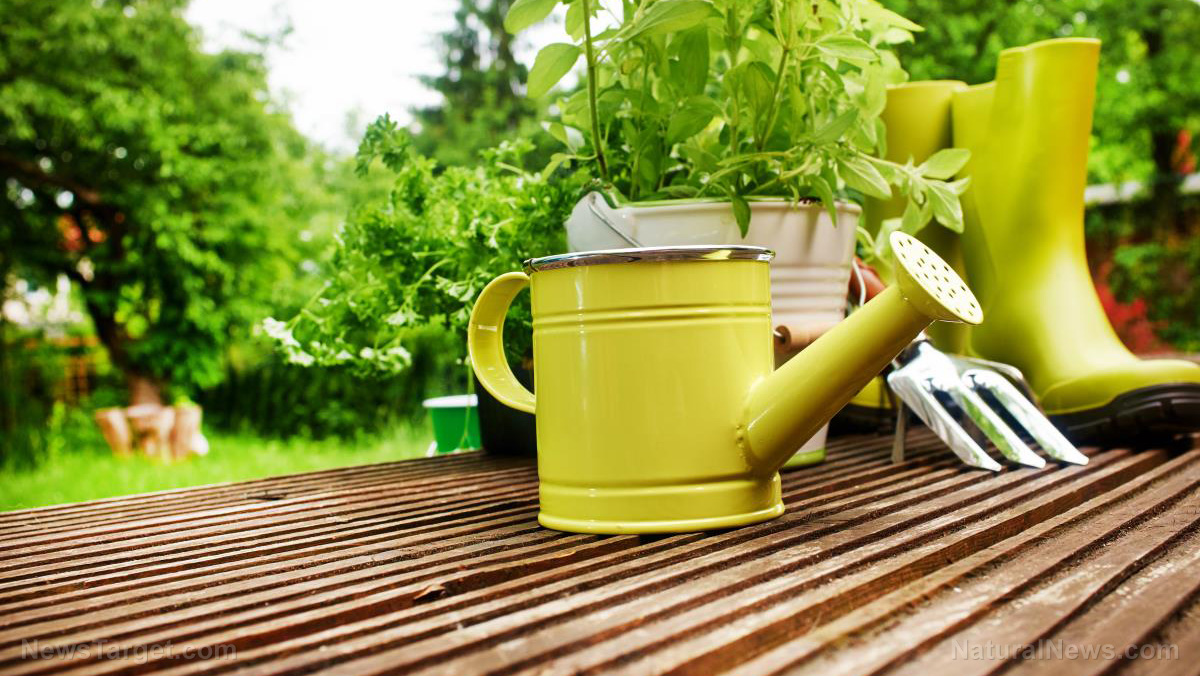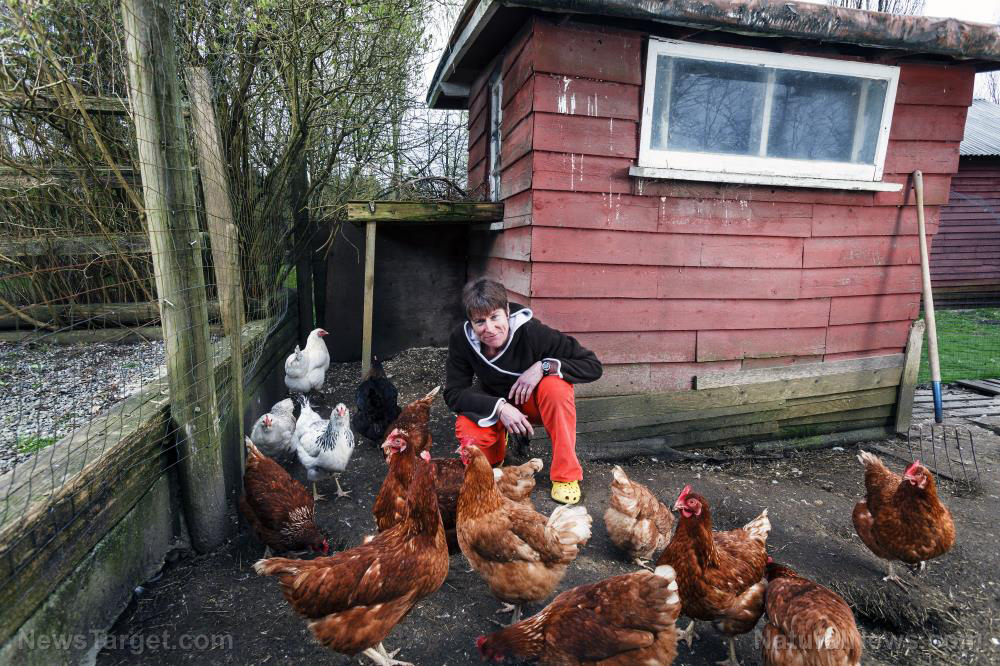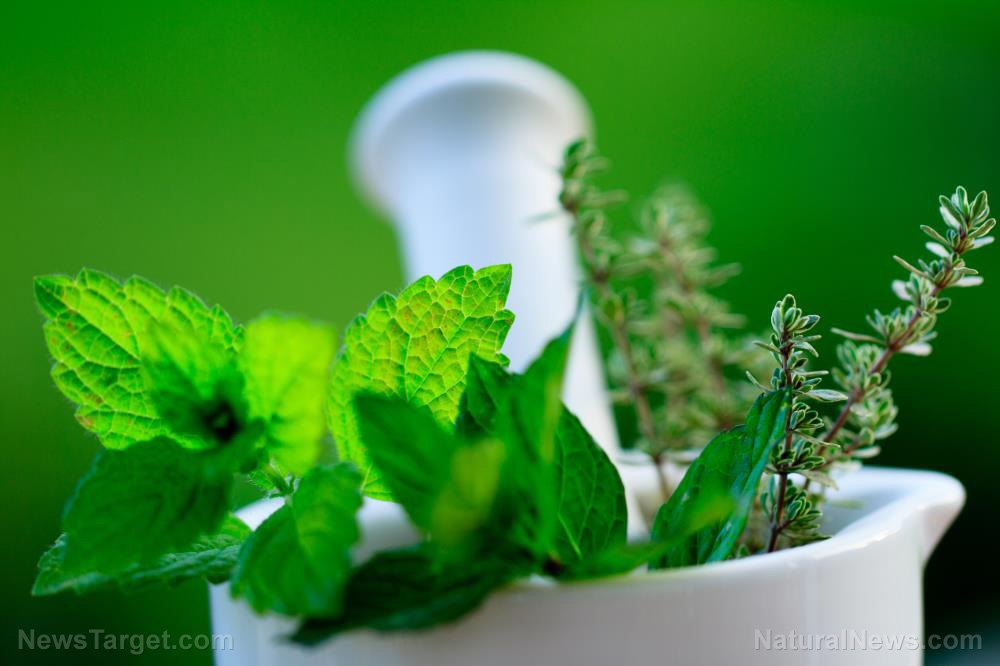Prepper medicine: How to make several different herbal remedies
08/03/2022 / By Zoey Sky

Even if disaster doesn’t strike, knowing how to make herbal remedies is an important prepping skill to have.
If you know how to make different herbal remedies, you can treat common issues like sleep problems or digestive issues using herbs from your home garden. (h/t to CommonSenseHome.com)
Benefits of knowing how to make herbal remedies
Some herbal remedies can be used to treat conditions like congestion, an upset stomach or even chronic illnesses. (Related: Prepping skills: Tips for learning herbal medicine.)
Before you start gathering herbs and supplies, you first need to determine why you want to incorporate herbs into your wellness plan.
Do you want to use herbal remedies for your overall health? Or do you have a specific issue you want to address?
Some herbs are considered safe and mild enough for general wellness. You can usually find them in herbal products and in supplement form.
These herbs may be used to help with:
- Boosting immunity
- Promoting restful sleep
- Enhancing alertness or mood
- Reducing stress
- Increasing antioxidant intake
These herbs are generally considered safe for overall wellness in small amounts and in mild preparations:
- Chamomile
- Echinacea
- Elderberry
- Holy basil/tulsi
- Ginger
- Valerian
But if you want to treat a specific health issue, talk to a professional to get a proper dosage that’s safe, effective and suited to your specific needs. Consulting a health practitioner is crucial because the effect of a single herb can change based on the amount used.
Basic herbal medicine preparations
Herbal medicine preparation can be either internal or external. Internal remedies are those you eat or drink.
Meanwhile, external remedies are topical or applied to the skin. This includes preparations like poultices and salves.
Water-based preparations
There are two types of water-based herbal remedies: infusions and decoctions.
Herbal tea is considered a simple infusion. Infusions work best for flowers and leaves.
If you are working with woody parts and roots, make a decoction.
Hot infusions help draw out vitamins, enzymes and aromatic volatile oils. It’s best to use flowers, leaves and aromatic roots in hot infusions. Use herbs like ginger root, holy basil, horsetail, nettle leaf, raspberry leaf and red clover.
Steep time will depend on your personal flavor preferences and the specific herbs that you’re using. The longer certain herbs are steeped, the stronger their flavors become.
Different nutritional benefits are also gained from different steep times for specific herbs since longer steeping times tend to draw out more minerals. Generally, you steep herbs for longer than you do black, green or white tea leaves.
To make a hot infusion, add one teaspoon of dried herbs to a cup. If you are using fresh herbs, add two to three teaspoons. Add one cup of boiling water to the herbs. Cover and steep the mixture for 10 to 15 minutes.
When the mixture has steeped, strain out the herbs and sweeten with a little honey, if desired.
Cold infusions are best for mucilaginous herbs and herbs with delicate essential oils like marshmallow root, peppermint leaf or rose buds. You can also use freshly harvested herbs like lemon balm or St. John’s Wort.
Since cold infusions don’t require boiling, bacteria growth can happen more quickly than with hot infusions. When making cold infusions, always use clean tools.
Refrigerate a cold infusion if you’re not going to drink it right away and consume or dispose of it within a week. Dispose of the liquid sooner if you notice an off taste, unpleasant smell or change in appearance.
To make a cold infusion, fill a quart jar with cold water. Bundle one ounce of your chosen herb in cheesecloth or muslin bag.
Slightly moisten the herb inside the bundle for easier submersion, then submerge the bundle just below the water in the jar. Drape the tied end of the bundle over the lip of the jar.
Secure by loosely screwing on the cap. Let the mixture infuse overnight.
Alternatively, you can make a cold infusion by placing loose herbs in a quart jar. Fill the jar with cold water, then seal the jar. Let the mixture infuse overnight.
In the morning, strain the herbs out with a sprouting screen and lid or funnel with a filter.
To make a decoction, get a glass, ceramic or other non-reactive pot. Don’t use an aluminum container.
Add one teaspoon of dried herbs or a tablespoon of fresh herbs that have been cut into small pieces. Cover the herbs with one cup of water.
Place the lid on and bring to a boil, then boil for 10 to 15 minutes. Strain and drink the decoction.
Alcohol-based preparations
Some plant constituents infuse better into alcohol than water. Additionally, the alcohol acts as a preservative.
To make a basic alcoholic tincture, place four ounces of dried herbs (or eight ounces of fresh herbs) into a glass jar with a lid. Cover the herbs with one pint of vodka (60- to 80-proof or 30 to 40 percent alcohol) and close the container.
Shake the jar twice a day and place it in a warm location. After two to four weeks, strain out the herbs using a thick cheesecloth or flour sack towel.
Store the liquid in a dark container and store it in a cool location away from direct sunlight.
You can also infuse herbs into other kinds of spirits, such as wine.
Try this recipe for a dandelion aperitif.
Ingredients:
- 1 quart vodka
- 2-3 cups fresh dandelion blossoms
- 2/3 cup sugar
- Rind of half a lemon
Preparation:
- Don’t wash the flowers. Cut off the green parts.
- Combine all the ingredients in a jar, then cap. Shake the mixture daily.
- After two weeks, strain the mixture. Serve the aperitif with ice and lemon for a cold drink. If you prefer a hot beverage, serve the aperitif with hot water and honey. You can also serve the aperitif by itself before or after meals.
You can make this recipe with any edible flowers or herbs.
Other herbal preparations
If you’re trying to avoid alcohol, make tinctures with other ingredients like vinegar or glycerin. They don’t work as well as alcohol, but they are an acceptable substitute.
Herbal syrups like elderberry syrup and pinecone “jam” can help soothe a sore throat and boost your immune system.
Follow the recipe below to make an herbal vinegar tincture.
Ingredients:
- Apple cider vinegar
- Dried herbs
Tools:
- Funnel
- Glass container with a tight-sealing lid (quart- or gallon-sized jar)
- Stopper bottles
- Strainer or cheesecloth
Preparation:
- Fill the glass container full of the dried herbs.
- Pour the apple cider vinegar over the herbs until they are completely submerged.
- Cap the container tightly. Label the tincture with the contents and the date you started.
- Store the container in a cool, dark place. Shake the bottle to agitate the contents every day.
- After two weeks, pour the liquid into stopper bottles. Strain it through a kitchen strainer or cheesecloth to remove the dried herbs.
- Store the stopper bottles in a cool, dark place until you need the tincture.
Notes:
- Use raw apple cider vinegar. If you don’t have raw apple cider vinegar, use apple cider vinegar that still contains the mother or the beneficial bacteria that allows for fermentation.
- Do not use white vinegar.
- Avoid fresh herbs. Use dry herbs only.
- Vinegar tinctures have a one-year shelf life. After this time, discard the old tincture and create a fresh batch.
Visit Naturopathy.news to learn more about DIY herbal remedies.
Watch the video below to know more about the health benefits of sorrel.
This video is from the Holistic Herbalist channel on Brighteon.com.
More related stories:
Home gardening for preppers: 7 Medicinal herbs you can propagate from cuttings.
4 Health benefits of cinnamon, a powerful spice that can help reduce blood sugar levels.
10 Ways to use comfrey, a powerful healing herb.
Sources include:
Submit a correction >>
Tagged Under:
alternative medicine, emergency medicine, green living, herbal medicine, Herbs, homesteading, natural cures, natural medicine, plant medicine, preparedness, prepper, prepping, prepping skills, recipes, remedies, survival, survival medicine, survival skills
This article may contain statements that reflect the opinion of the author
RECENT NEWS & ARTICLES
COPYRIGHT © 2017 GREEN LIVING NEWS



















